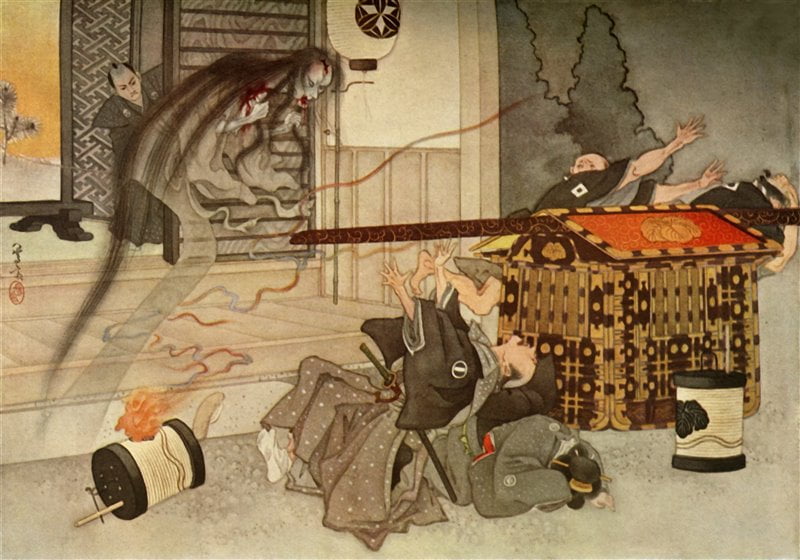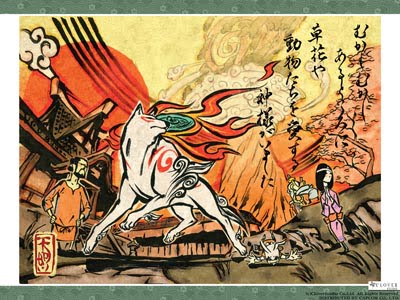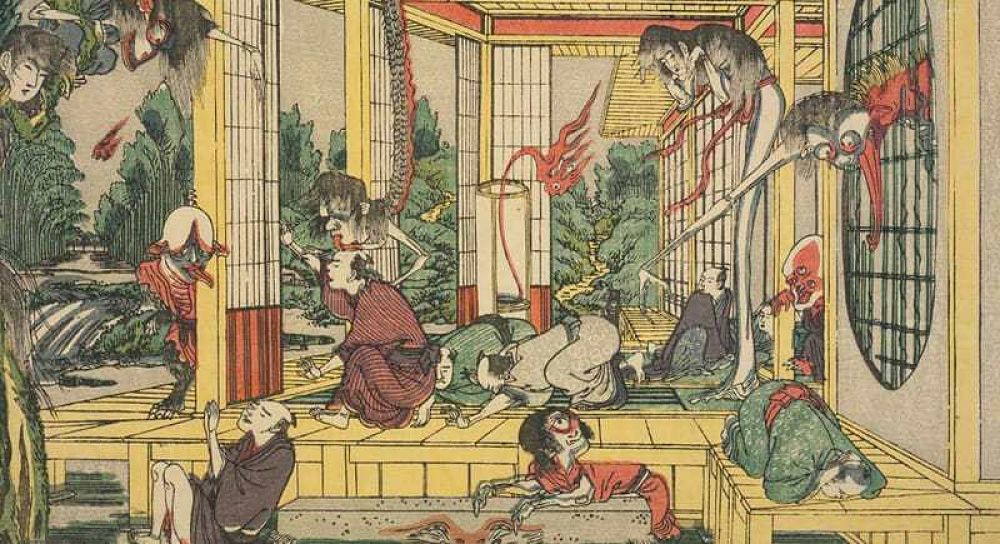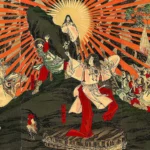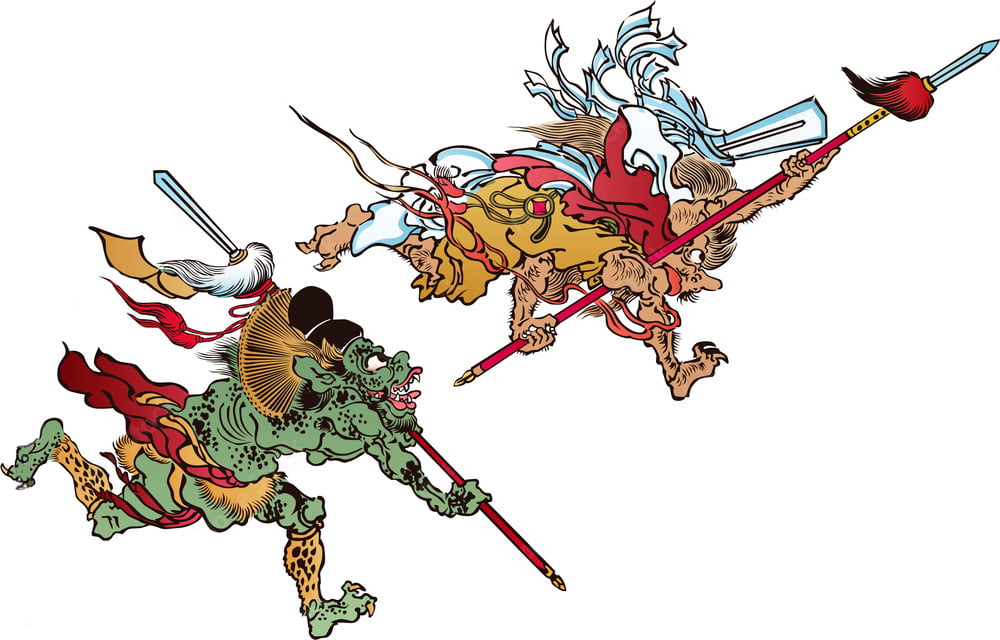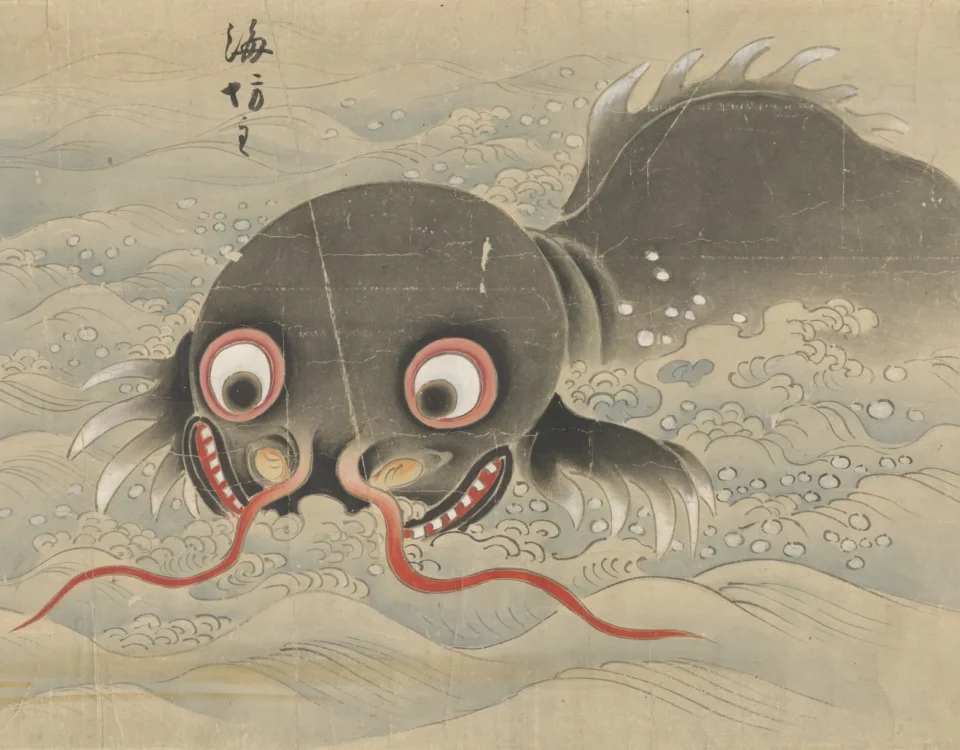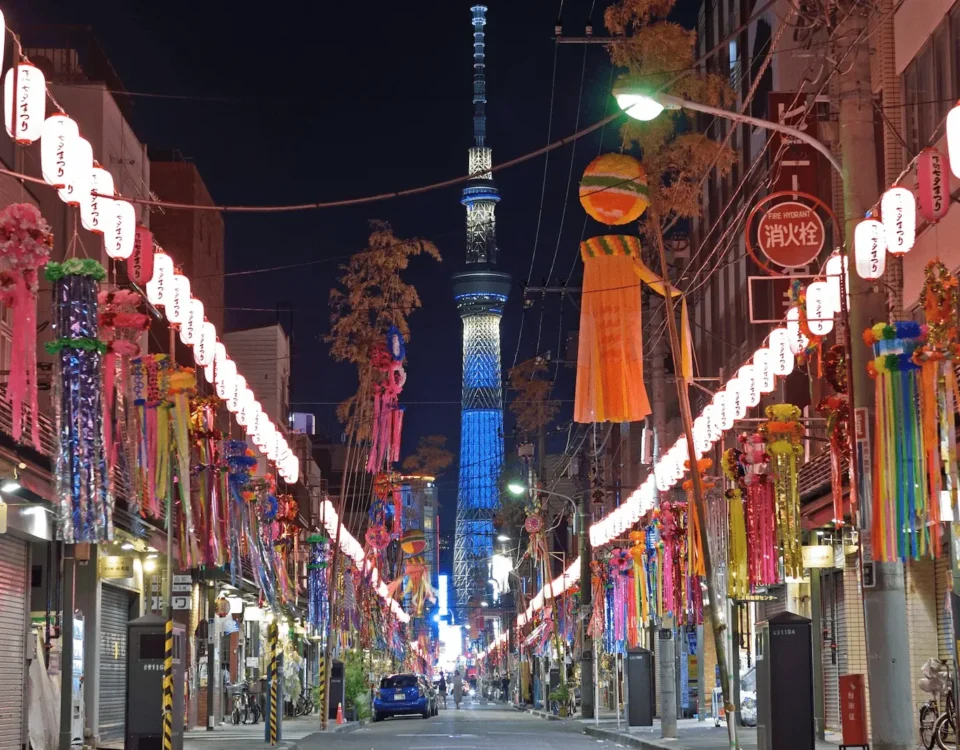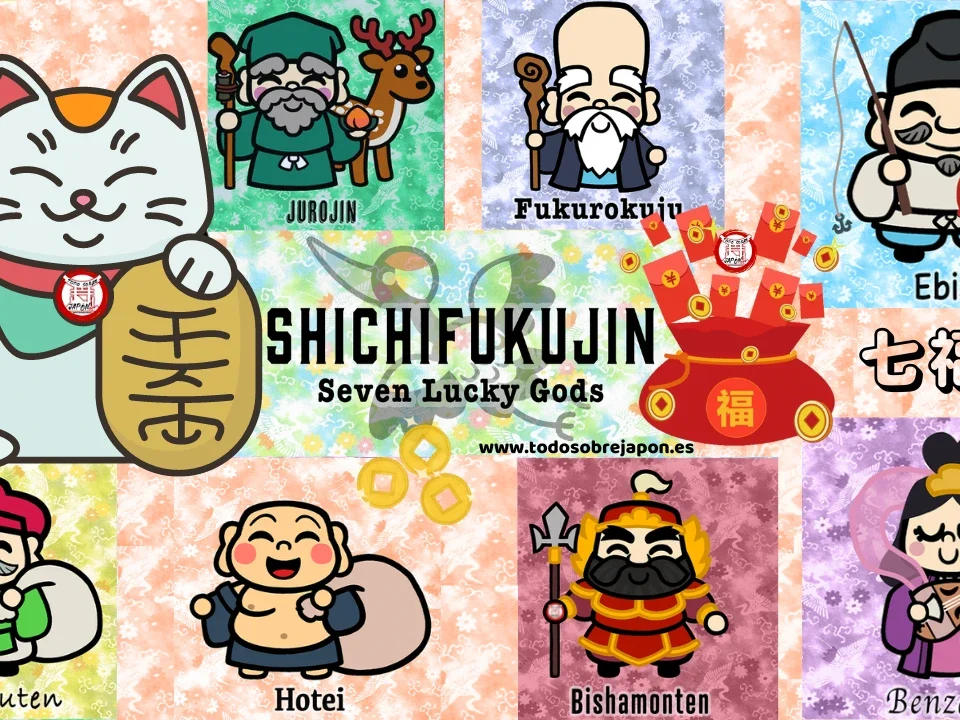In this article you will find Japanese mythical creatures such as: The most fascinating demons, Yokai, monsters, dragons and spirits of Japanese mythology.
Yokai and the 4 Sacred Creatures of Japanese Mythology (Cardinal Points)

Japanese mythology has a rich universe of fantastic creatures halfway between animals and spirits. Most of them are Yokai (demons), either as spirits, ghosts, monsters or animals, which have been depicted in paintings or books since ancient times.
Yokai are stronger than humans and have magical powers that are often used for evil purposes. These Japanese mythical creatures live in forests, streams, houses and fields, so be careful never to cross paths with one. Their weapons are deception and transformation.
Humans cannot defeat a Yokai, but there are higher forces that can, such as taijiya (demon hunters) or Buddhist monks who fight Yokai with the blessing of Buddha. There are, however, a number of Yokai who are good and can live with mankind. There are even some Japanese mythical creatures known as demi-demons.
Curiosity: The Yokai, as you may have noticed in the anime of the same name and in hundreds of other anime we can see the Yokai.
In China they also have the same protector gods but with different names: Xuán Wu, Zhu Què, Bai Hu and Qing Lóng.
The 4 Yokai Creatures | Japanese Mythology | Japanese Mythology Creatures
These gods are the guardians of the city of Kyoto and each one protects an area of the city according to its location in the cardinal points. In the city there are temples representative of each deity.
In 1983 the Kitora tomb was found in the village of Asuka, one of the few ancient records of these four gods. In it are painted representations of these gods on the walls according to their cardinal orientation. In addition, a system of constellations is painted on the ceiling.
1. Suzaku「朱雀」| Japanese mythology
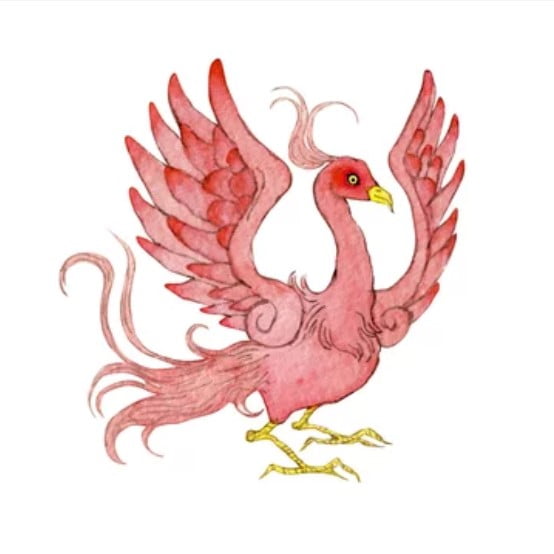
This Japanese myth involves Suzaku, which represents the South and would become like a version of the phoenix bird linked to fire and summer. It is also the protector of the city of Kyoto and is the only Japanese sacred animal to give its name to a constellation.
As a divine being, Suzaku was consolidated in Japanese folklore by the influence of Chinese tradition introduced into Japanese mythology, as a large bird of vermilion color and bright plumage that defends the city from the cardinal point of the south by opening its jaws and launching large fireballs against enemies.
CURIOSITY: In Kyoto you can find the suzaku portal (suzakumon) which was the entrance to the imperial palace of the ancient capital “Heijô-kyo” of Nara. The portal communicates through the great avenue of Suzaku with the Rajômon gate that was the entrance to the capital.
2. Genbu「玄武」| Japanese mythology
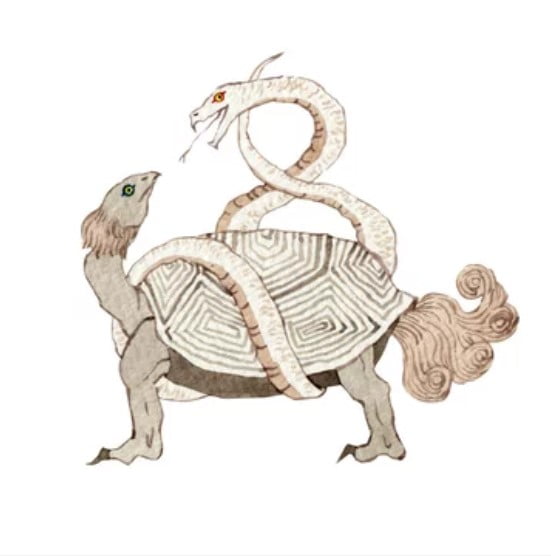
This Japanese mythical creature is a turtle with a coiled snake called Genbu represents the North and symbolizes the earth and winter. It is inspired by the black turtles of the north and, under the influence of Chinese religion, carries the value of honorability. Female turtles cannot mate with male turtles, but they can mate with snakes. Hence their shape.
However, in Japanese mythology, this fact caused the word ‘turtle’ to spread over time as a synonym for an unfaithful woman, and the value of honor began to lose its purity.
3. Byakko「白虎」| Japanese mythology
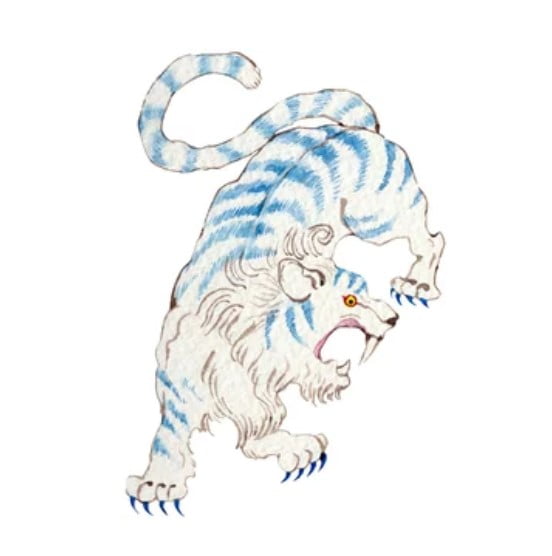
During the Han dynasty, the tiger was a sacred animal revered as the king of all beasts, and when the Chinese tradition introduced its mythological universe in Japan, it came to represent one of the cardinal points, the West, as a great white tiger symbolizing the wind and autumn.
In addition to defending and protecting, the Byakko tiger guided the good rulers in their decisions and their bad practices. Therefore, in addition to fierceness and strength, this great white tiger treasured the qualities of wisdom and justice.
4. Seiryu「青龍」| Japanese mythology
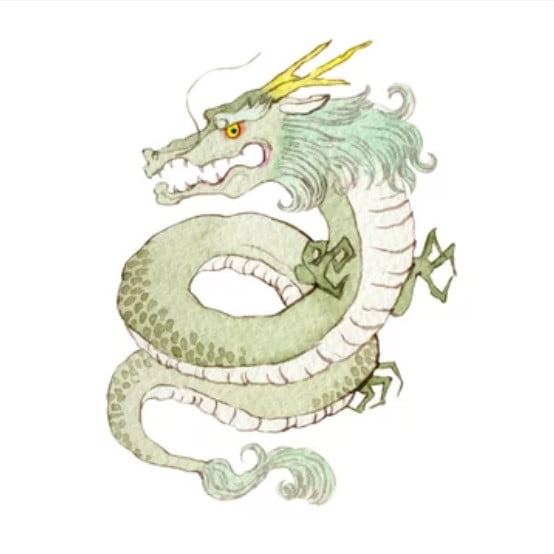
It is the second dragon of the four sacred creatures of Japanese mythology, but unlike Suzaku, Seiryu is blue and represents the cardinal point of the East, water and spring. He is revered in many parts of Japan and is reproduced in a large statue at the entrance of Kiyomizu temple.
In the same temple, there is a large water fountain that according to popular beliefs is provided by this mythical Japanese creature itself, and it is recommended to drink its water once a year as a sign of worship to one of the four protectors of the city.
CURIOSITY: The temple of Kiyomizu (Kyoto) represents the blue dragon. Before entering the temple there is a statue of the dragon, which is said to be drunk at midnight from the fountain inside the temple complex. After doing so every year, they gather in ceremony to worship the dragon from the east.
Curiosity: It appears in the anime Fushigi Yugi.
We have seen 4 beings of Japanese mythology creatures let’s see the 7 Japanese mythological animals:
The 7 Japanese Mythical Creatures | Japanese Mythology | Yokai | Japanese Mythology Creatures
Japanese mythology, based on animistic tradition and belief in spirits, is full of fantastic creatures with animal-like appearance and magical powers. Many of them are yokai (demons), and produce fear and terror.
1. Shinigami「死神」(as in Death Note) | Japanese mythology | Yokai
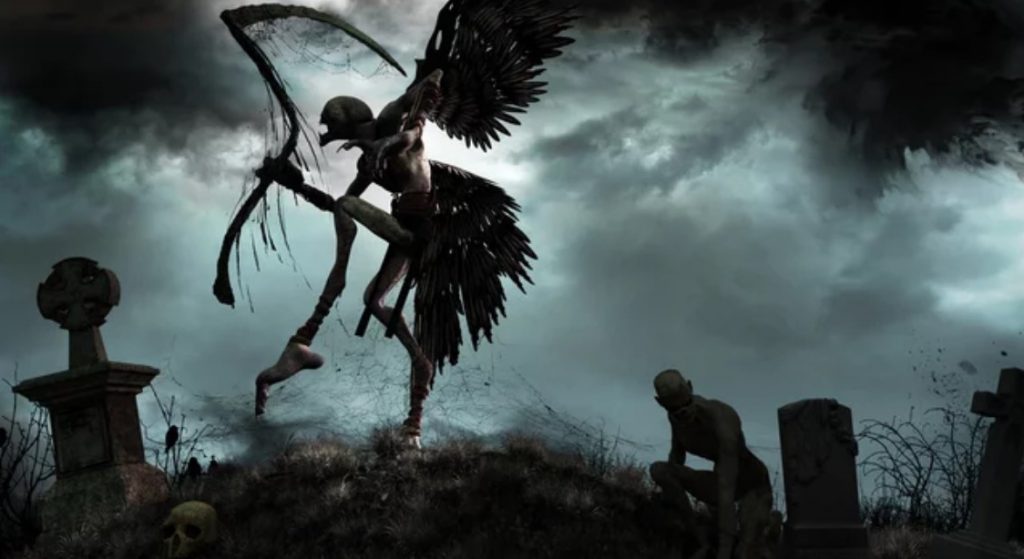
With an ambiguous interpretation within Japanese mythology, in some regions, Shinigami is known as a positive being that accompanies the deceased on the journey to the afterlife, and in others, it is described as a terrifying being that induces human beings to death.
Shinigami is the Japanese mythical creature that would be the equivalent of the grim reaper, but in this case, in addition to visiting the person when they have to die, they are in charge of provoking their death and deciding how they will die.
Since suicide is frequent in Japan, Shinigami has finally been considered the spirit of suicide.
The Shinigami’s appearance is most disturbing, because they are described as emaciated consisting only of skin and bones, with a demonic face, long white hair and two red horns emerging from the skull. They carry a small dagger in their mouth with which they cut people’s lives.
Curiosity: In fact, the impact of this Japanese mythical creature role in the time of death of people is such that Shinigami has inspired decisive characters in anime such as Death Note: in this case, the Shinigami is the being that dropped among the mortals the notebook in which they would write the names of those who are going to die.
2. Ubume「姑獲鳥」| Japanese mythology | Yokai
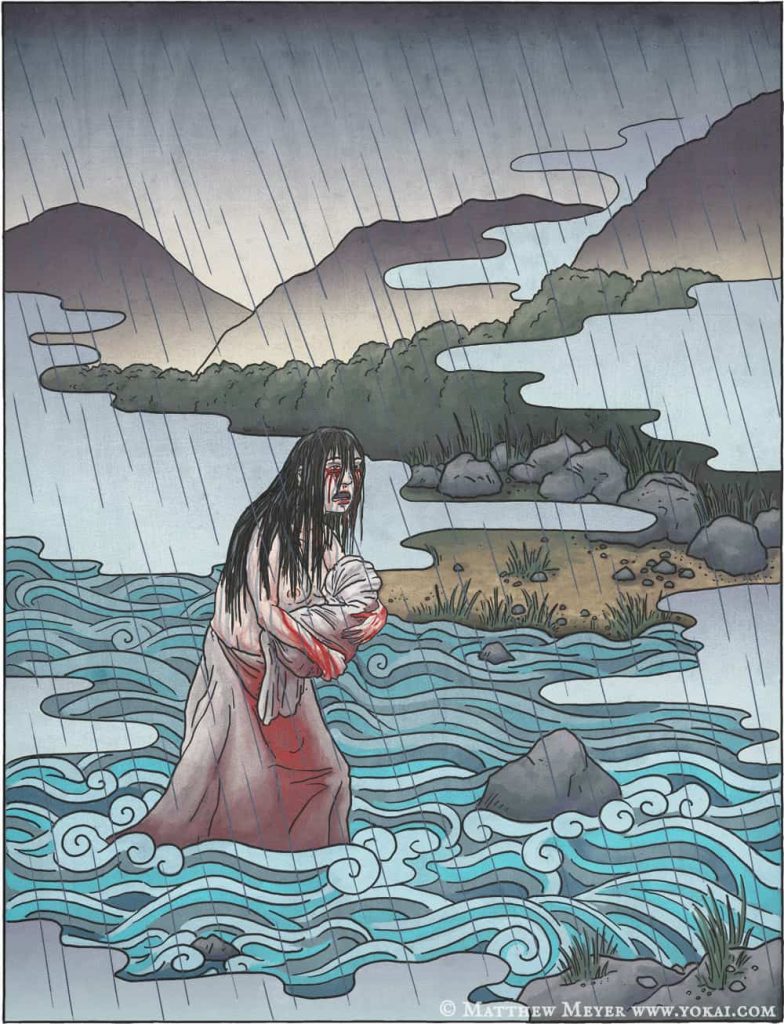
This type of Japanese spirits are embodied in a demonic creature that absorbs the souls of women who died during childbirth. They also represent mothers who let their children die, turning them into a fearsome being hated by all.
It is one of the most feared Yokai and has its origin in the Night Parade of a Hundred Demons that during the Tokugawa dynasty collected all kinds of spirits and supernatural creatures. Among other Japanese mythical creatures, this compendium includes the legend of Ubume, in which a wandering spirit in the form of a woman with a dead baby in her arms appears begging among passersby before disappearing.
During ancient Japanese dynasties, it was common to bury humans alive under bridges, dams and castles to appease the wrath of the gods and protect them from natural disasters. According to this Japanese legend, a mother and her child served as a sacrifice, and her spirit has been trying to take revenge on humans ever since.
3. Kitsune, the Japanese fox「狐」| Japanese mythology | Yokai
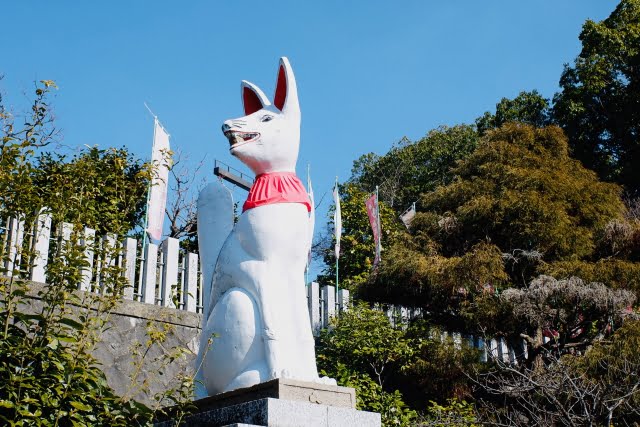
The Japanese fox is one of the most popular and widespread Japanese mythical creatures, representing wisdom, experience and divinity. The particularity of these beings is that they increase their wisdom with age, so the older they are, the wiser they are. They are also more intelligent the more tails they have, reaching a total of nine.
According to Japanese mythology, these foxes can change their appearance, but they do not use it to deceive but to transform themselves into loyal and friendly protectors. Kitsune are spirits that when they reach nine tails, about 1,000 years old, they turn golden.
There are two types of kitsune or Japanese foxes: the zenko, good or heavenly foxes that act as emissaries of the god Inari, and the yako, or mischievous and evil foxes. In ancient Japan, men lived near foxes and attributed divine qualities to them.
Curiosity: It appears in the anime Naruto.
4. Jorogumo「絡新婦」| Japanese mythology | Yokai
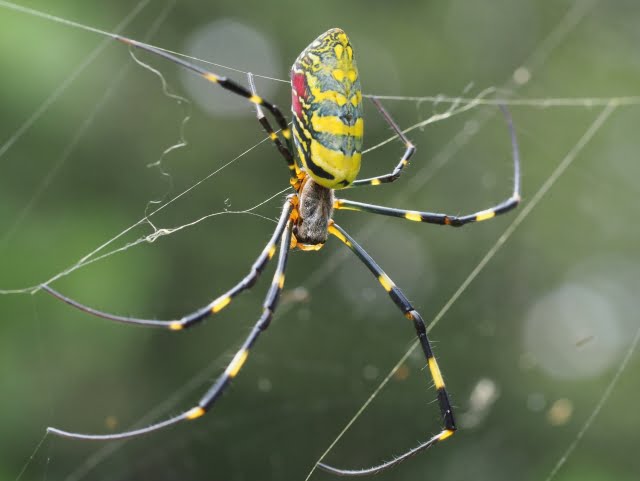
Halfway between spiders and the black widow, this terrifying spirit of ancient Japan has the body of a large arachnid that lives to be 400 years old and has magical powers that allow it to take the form of an attractive woman to trick men and then kill and eat them.
According to Japanese mythology, Jorogumo live in dark caves or holes in the farthest corners of the forest, as they are essentially a demon with an appetite for solitude. However, they are dangerous beings when they are hungry, and when they encounter humans, especially if young, they do not hesitate to use their wiles.
Originally, Jorogumo was a woman who lived in the forest and lured young people with the sound of her instruments. While they were hypnotized, this Japanese demon turned into a huge spider that immobilized the victim with silk threads and then devoured them. They are intelligent and cunning beings.
5. Yuki-onna「雪女」| Japanese mythology | Yokai
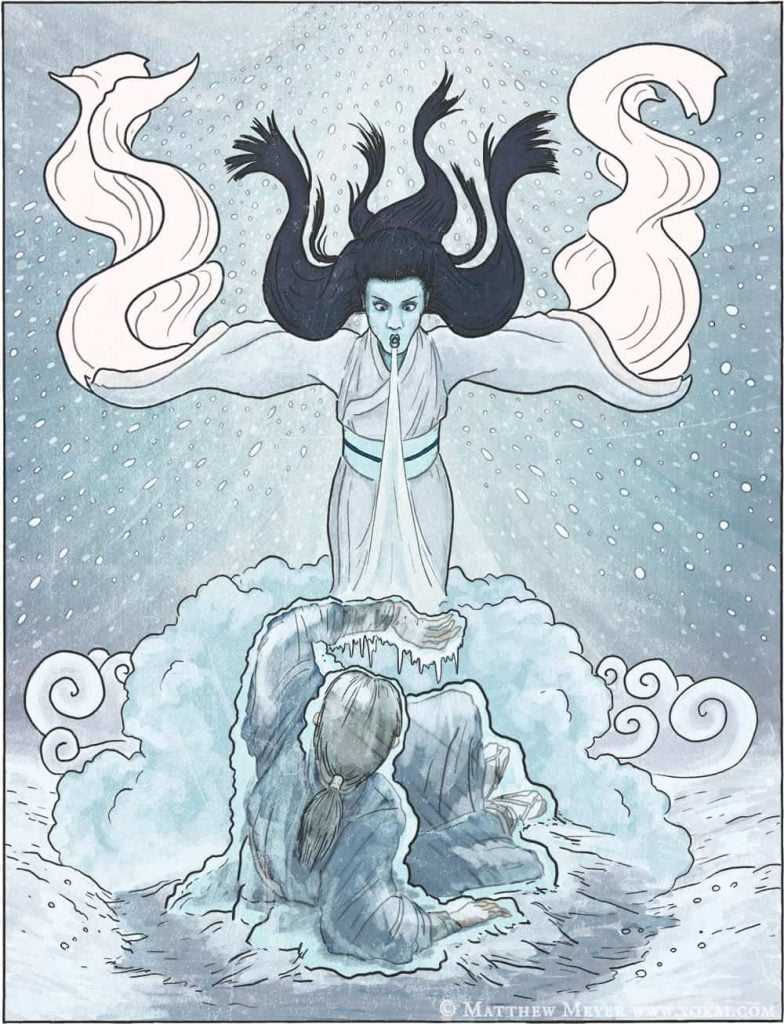
This is one of the most well-known Japanese female names: Yuki-onna, the woman who leaves people frozen with breath. She is another of the most fascinating mythological creatures in Japanese folklore. She lives in frozen areas and appears as a pale lady who appears when it snows and lures disoriented hikers to turn them into pure ice when she breathes on them.
She is one of the most beautiful Japanese spirits and her origin is linked to a woman who died of hypothermia during a snowstorm. In the past, Japanese folk beliefs gave her an evil and deadly personality, but over the centuries her image has been softened and in some places she is even revered as a protector against snowstorms.
Another legend about Yuki-onna, much more macabre, says that in the middle of a storm she can appear in your house asking for shelter and, if you let her in, she will kill you in your sleep. Some versions describe her as a blood-sucking vampire.
6. Kappa「河童」| Japanese mythology | Yokai
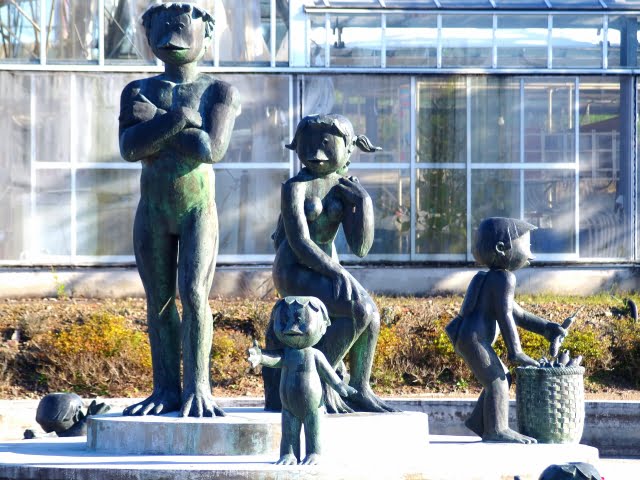
Within the rich Japanese folklore, Kappa is one of the most important demons (Yokai) in Japanese mythology. His appearance is like a frog the size of a child with a shell and the head of a turtle.
That is why Kappa lives in streams and rivers. Kappa’s powers come from a water-filled cavity in their head and that is their source of life. They are very feared beings because they steal vegetables, harass women and kidnap children. In fact, Kappa is known because they love to kill children.
The only way to escape from such terrible creatures is to show them fire or bow, as they are guided by the Japanese code of conduct. Kappa’s virtue is that they speak the Japanese language. Fun fact: They love cucumbers!
7. Tanuki「狸」 | Japanese mythology | Yokai
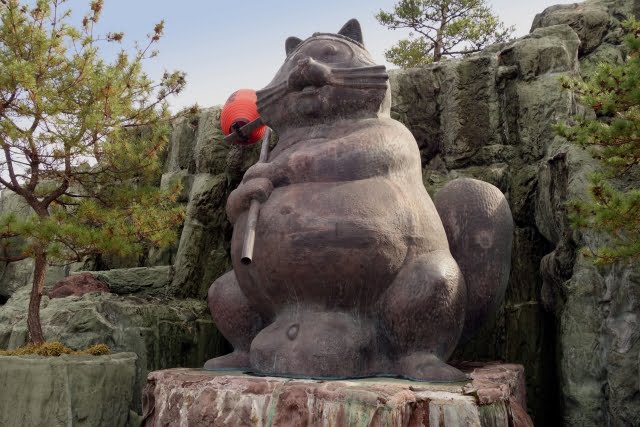
The tanuki are related to the Japanese raccoon, they have great magical powers. Their great power is to confuse and deceive the people of the forest by putting a magic leaf on their head to distort the reality and vision of others.
Thanks to a magic leaf, Tanuki turns into a beautiful woman and makes the disoriented walker believe that they are in a house in the middle of the forest. After a party, people will fall asleep and wake up the next day with empty pockets.
The Tanuki’s reputation as tricksters and merchant thieves is well known. Initially, they were deified as lords of all the elements of nature, but with the advent of Buddhism, they lost their divine character.
Here are some pictures about Japanese mythology:
